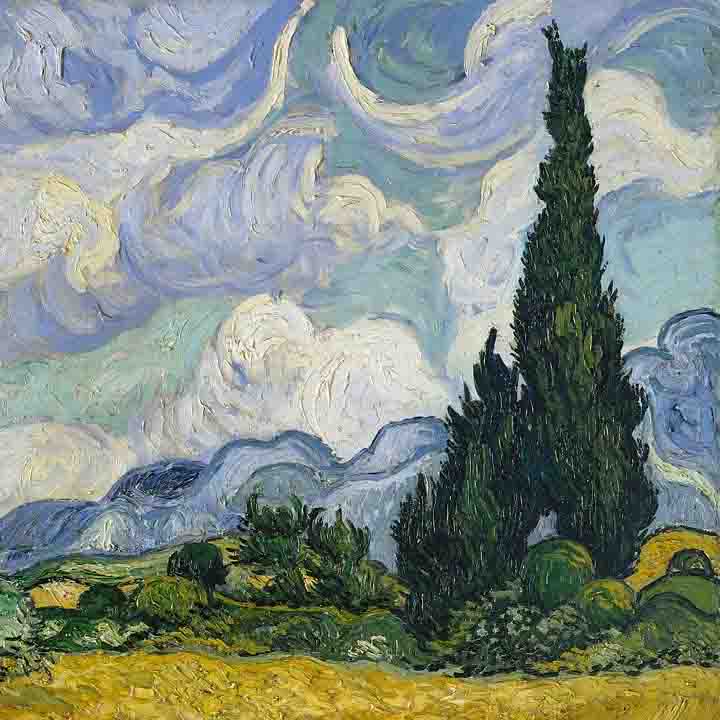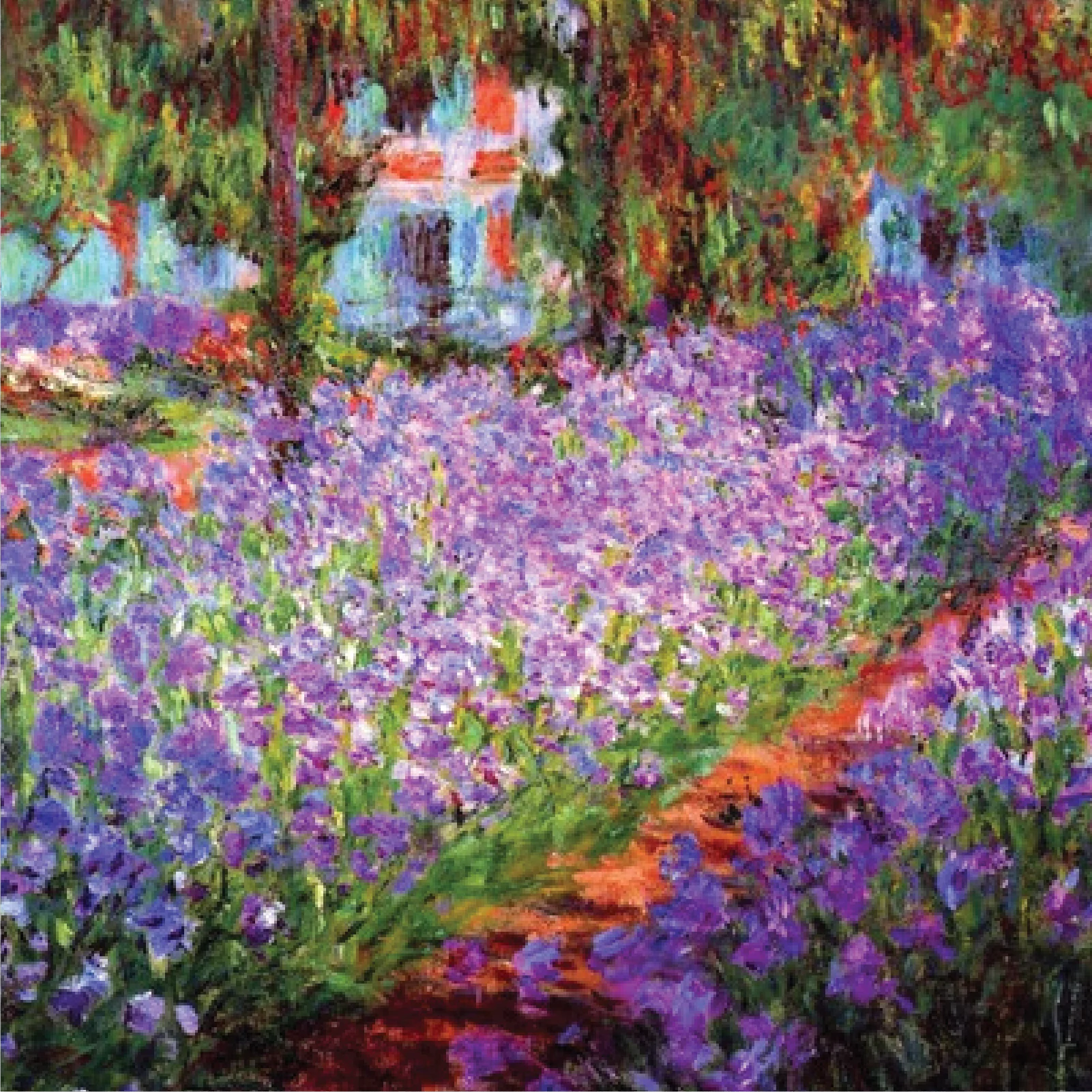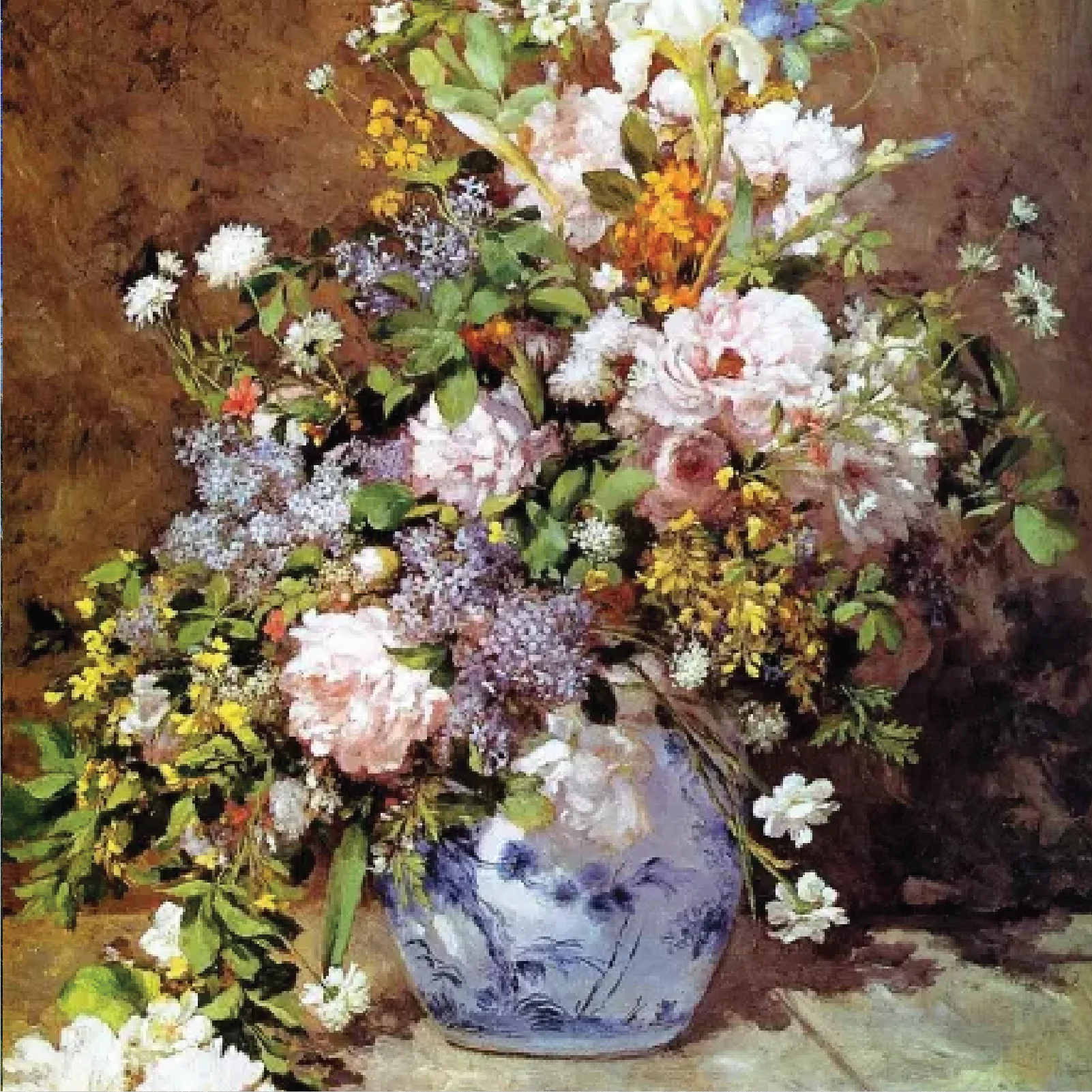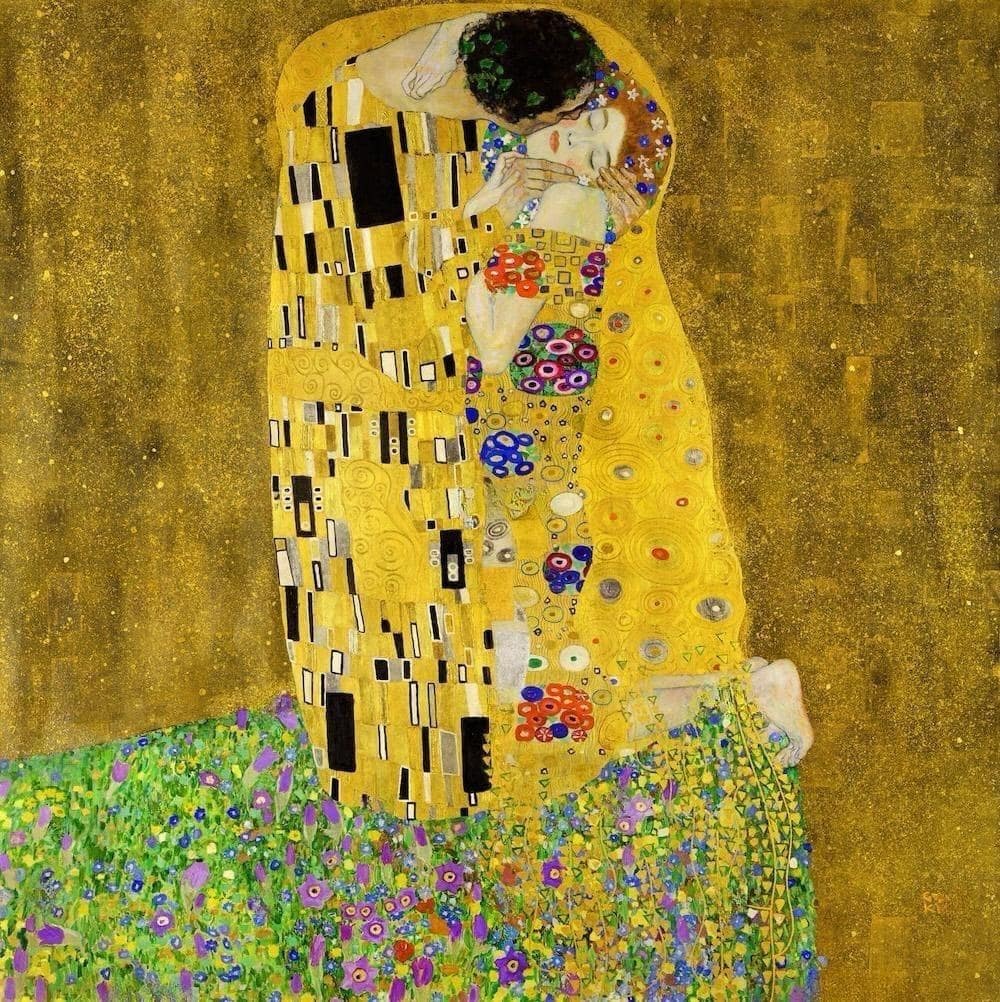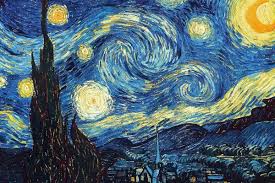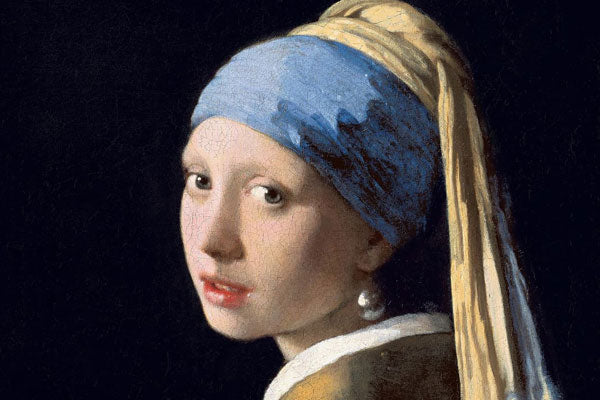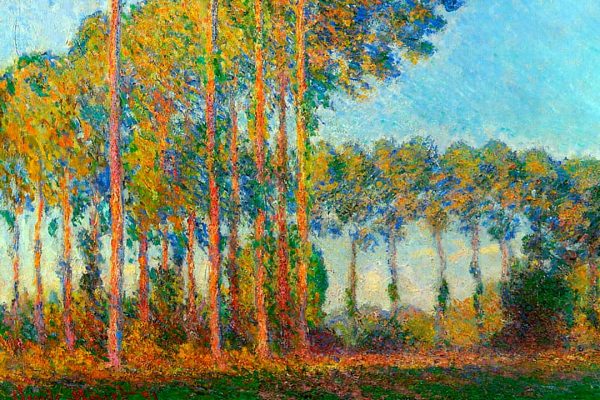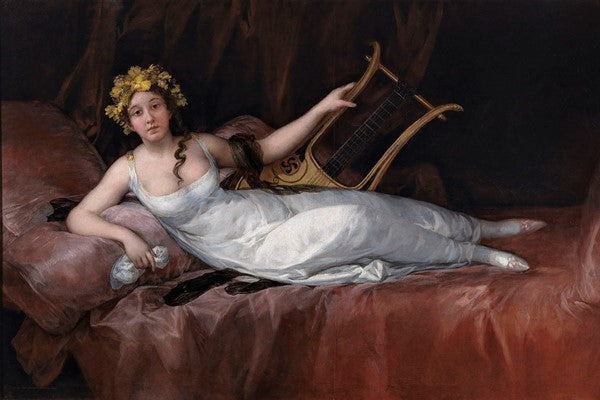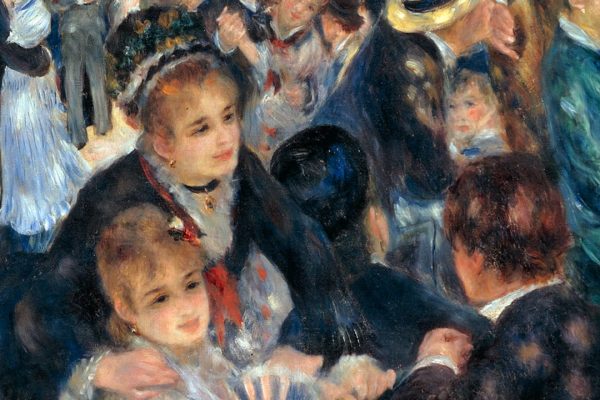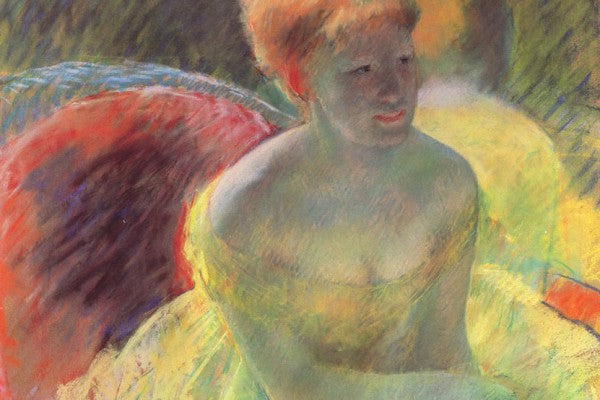Vincent Van Gogh is considered one of the greatest references to Impressionism and Post-Impressionism. His characteristic stroke, the combination of his colors and his themes, often tormented, make Van Gogh one of the most influential painters of the late 19th century. We invite you to get to know his most famous paintings.
Table of Contents
10. Café Terrace at Night (1888)
This evocative work of an evening cafe demonstrates Van Gogh's mastery of playing with light and color. The artist creates a captivating atmosphere with two environments: the yellow, luminous café, and the expectant night that opens at the end of the street. Amid the gloom, this vibrant and diffused café claims a share of joy. The detailed rendering of the environment creates a unique and emotional visual experience.
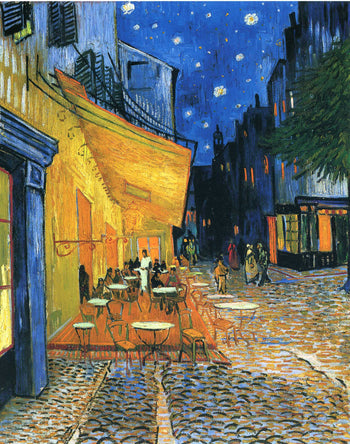
Café Terrace at Night
Vincent van Gogh
9. Night Café (1888)
During his stay in Arles, Van Gogh used to go to a night cafe opposite his house. The artist painted the interior of the cafe and gives it a ghostly touch coming from the strange light falling on the floor and on the customers, in a greenish-yellow tone that contrasts with the red of the walls. The work is in the Yale University Art Gallery in New Haven, (Connecticut, United States).
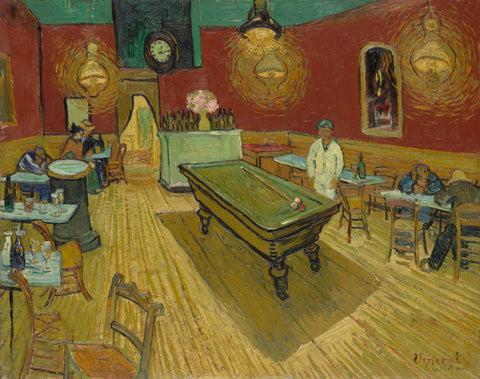
Night Café
Vincent van Gogh
8. Self-Portrait with Bandaged Ear and Pipe (1889)
This work is believed to portray Van Gogh after an attack by the painter Paul Gauguin with a razor after a bad relationship. After a while, he cut off his own ear and sent it to the other artist. The commonly accepted version is that Van Gogh cut off his ear in an abscess of mental insanity. This painting is in the Tate Gallery, London.

Self-Portrait with Bandaged Ear and Pipe
Vincent van Gogh
7. Wheatfield with Crows (1890)
This work has been considered one of Van Gogh's last works and is one of several depictions of the wheat fields surrounding him during his last days. The painting depicts a sense of isolation and loneliness, in which one sees a path that ends in the middle of the field surrounded by crows but does not seem to lead anywhere. It is part of a series of paintings that Van Gogh made after taking long walks in the Auvers region to reorganize his emotions. In his letters, the Dutch painter admitted that he wanted to express the sadness and "extreme loneliness" he felt at that time. A few days after finishing this painting, on July 27, 1890, Vincent went out to a field similar to this one and shot himself.

Wheatfield with Crows
Vincent van Gogh
6. Self-Portrait (1889)
This painting has the characteristic hallucinatory swirls, denoting in his portrait an intense sense of turbulence. Van Gogh has been labeled as an intense and melancholic character full of expression and emotional turmoil. Today, this painting rests in the Musée d'Orsay in Paris located in the former Orsay railway station building, which houses the largest collection of Impressionist works in the world.

Self-Portrait
Vincent van Gogh
5. Lilies (1889)
Painted shortly before his death, “Lilies” is a masterpiece noted for its soft, harmonious tones. Van Gogh depicted lilies floating in a pond, creating a serene and contemplative image. The combination of pastel colors and distinctive brushstrokes demonstrates the artist's ability to convey beauty and serenity amid his own personal struggle. The work is inspired by the garden of the psychiatric hospital in Saint-Rémy (France), where the artist was staying. "Lilies" is one of Van Gogh's most famous works, remembered for the movement of the flowers, achieved by the wavy, twisting, and curling lines.

Lilies
Vincent van Gogh
4. Van Gogh's Chair (1888)
This piece is a silent self-portrait of the artist. The empty chair symbolizes Van Gogh's loneliness and longing for human connection. His pipe and tobacco can be seen on the chair. The choice of colors and the simplicity of the composition give depth to the emotional expression of the painting. Van Gogh also painted "Gauguin's Chair" where each chair represents the personalities of the artists: Van Gogh's, more rustic and artisan, Gauguin's, more elegant and with two novels on the seat. Each chair faces one way and is intended to be hung together. Van Gogh's Chair is in the National Gallery in London.

Van Gogh's Chair
Vincent van Gogh
3. The Bedroom in Arles (1888)
This work depicts Van Gogh's bedroom in the Yellow House in Arles. "The Bedroom in Arles" reveals the artist's distinctive style with its saturated colors and geometric shapes. The choice of warm tones and the arrangement of objects offer a unique insight into the artist's life and creativity. Van Gogh wanted to portray those things that gave him peace of mind and he did so through different colors: green, ochre, lemon yellow. With all of them, Van Gogh recalls the crepes and prints of his beloved Japan. It is an elementary composition, with straight lines and a strange perspective that is compensated by the combination of colored surfaces.

The Bedroom in Arles
Vincent van Gogh
2. The Sunflowers (1888)
The Sunflowers series is a set of paintings that Van Gogh created as a gift for his friend Paul Gauguin. The vivid and energetic depiction of these yellow sunflowers is a tribute to the artist's friendship and admiration for the vitality of nature. Van Gogh painted “The Sunflowers” while in the southern French town of Arles. Van Gogh was enchanted with sunflowers because his creation of these plants did not stop there and he made a large number of paintings based on their flowers.

The Sunflowers
Vincent van Gogh
1. The Starry Night (1889)
"The Starry Night" is Van Gogh's most recognized painting and one of the most famous works in the world. The work portrays Van Gogh's nighttime views from his room in the Saint-Remy mental sanatorium, where he spent the last years of his life. The painting shows a turbulent night sky over a tranquil landscape, along with expressionist-style spirals in the foreground. In the background can be seen the village, whose tranquility and somber colors contrast with the energetic composition of the sky, where its voluptuous textures and spiraling strokes convey liveliness and dynamism. The combination of intense colors and expressive brushstrokes reflects Van Gogh's emotionality and unique connection to nature.

The Starry Night
Vincent van Gogh
FAQs
-
How many paintings did Vincent van Gogh sell during his lifetime?Vincent van Gogh sold only a few paintings during his lifetime. The most notable sale was "The Red Vineyard," which was bought by Anna Boch.
-
What is the significance of "The Starry Night"?"The Starry Night" is one of Van Gogh's most famous works, depicting a turbulent night sky over a tranquil village. It was painted while he was in the Saint-Rémy-de-Provence asylum and reflects his emotional state.
-
Where can I see Van Gogh's "Sunflowers"?Van Gogh's "Sunflowers" series can be found in various museums, including the Van Gogh Museum in Amsterdam and the National Gallery in London.
-
What inspired Van Gogh's "Café Terrace at Night"?"Café Terrace at Night" was inspired by a café in Arles, France, where Van Gogh often visited. The painting is known for its vibrant use of color and depiction of night scenes.
-
Why did Van Gogh paint "Bedroom in Arles"?Van Gogh painted "Bedroom in Arles" to depict his living quarters in the Yellow House in Arles. The painting is known for its use of color and perspective to convey a sense of comfort and personal space.
-
What is the story behind "Wheatfield with Crows"?"Wheatfield with Crows" is considered one of Van Gogh's last works and is often interpreted as a reflection of his troubled mental state. The painting depicts a gloomy wheat field under a stormy sky, symbolizing isolation and despair.
-
How did Van Gogh's mental health affect his art?Van Gogh's mental health had a significant impact on his art, often influencing the emotional intensity and themes of his paintings. His time in the Saint-Rémy asylum, for example, produced some of his most famous works, including "The Starry Night".
-
What are some of Van Gogh's most famous paintings?Some of Van Gogh's most famous paintings include "The Starry Night," "Sunflowers," "Café Terrace at Night," "Bedroom in Arles," and "Wheatfield with Crows".
-
Where can I see Van Gogh's "Irises"?Van Gogh's "Irises" can be viewed at the J. Paul Getty Museum in Los Angeles. The painting is noted for its vibrant colors and detailed depiction of irises.
-
What influenced Van Gogh's style?Van Gogh was influenced by various art movements and styles, including Impressionism and Japanese ukiyo-e prints. His unique use of color, brushstrokes, and emotional depth set his work apart.
-
Can I get a custom diamond painting kit inspired by these artworks?Yes, if you enjoy crafts like diamond painting, you can often get custom kits made. This could potentially include using images of famous paintings like Van Gogh's. You can explore options for custom diamond painting kits here.
Visit the art-and-see.com and get your handmade oil painting reproductions.





